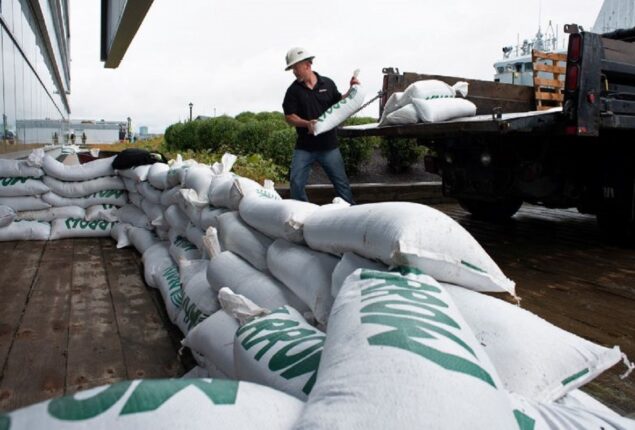
Fiona slams the Atlantic coast of Canada with powerful winds and rain
- Fiona is a hurricane that is now classified as a post-tropical cyclone.
- It made landfall in Nova Scotia early on Saturday.
- This meteorological event may go down as “landmark” for Canada.
Fiona, a hurricane that is now classified as a post-tropical cyclone, made landfall in Nova Scotia early on Saturday. This meteorological event may go down as “landmark” for Canada.
According to the Canadian Hurricane Centre, Fiona had an unofficial barometric pressure of 931.6 mb when it made landfall at Hart Island, making it the lowest pressure storm to ever make landfall in Canada. Beaver Island in eastern Nova Scotia experienced wind gusts of 94 mph (152 km/h).
As utilities were disrupted by winds and rain that extended well beyond the storm’s center, portions of Nova Scotia and Prince Edward Island began to feel the storm’s arrival Saturday morning. According to the area’s power outage center, more than 376,000 consumers in Nova Scotia have experienced power outages thus far.
Fiona is also expected to bring severe weather to New Brunswick, southern Quebec, and Newfoundland and Labrador as it moves north at a speed of more than 40 mph (65 km/h) after making landfall in eastern Nova Scotia between Canso and Guysborough. On Saturday morning, Fiona is anticipated to travel across Cape Breton Island and make landfall in the southeast Labrador Sea by evening.
Before making landfall, the Canadian Hurricane Centre reported that the storm was “generating high gusts and very heavy rains.” Widespread gusts of 80 to 110 kilometers per hour (50 to 68 miles per hour) have been seen thus far over Nova Scotia, Prince Edward Island, and the Iles-de-la-Madeleine, with a peak gust of 144 kilometers per hour (90 miles per hour) over Beaver Island, Nova Scotia.
Fiona, which on Friday was downgraded to a Category 2 storm, is still anticipated to deliver damaging storm surges, a lot of rain, and very strong winds. After passing the Turks and Caicos, Fiona became a Category 4 storm early on Wednesday over the Atlantic Ocean, and she stayed there until Friday afternoon.
Fiona has already claimed the lives of at least five people and cut off electricity to millions of people when it pounded several Caribbean islands this week, according to officials along the Atlantic seaboard who have advised citizens in the storm’s path to be extremely cautious and ready for her effects. Numerous locals are still working to recover after homes and water infrastructure in Puerto Rico, the Dominican Republic, and Turks & Caicos were severely devastated.
According to Canadian experts, Fiona is expected to be a “severe weather event” in eastern Canada and might bring two months’ worth of rain.
According to Chris Fogarty, manager of the Canadian Hurricane Centre, “this might be a landmark occurrence for Canada in terms of the severity of a tropical cyclone,” and it might even turn into Canada’s Superstorm Sandy. Sandy struck the eastern seaboard and 24 states in 2012, resulting in estimated damage of $78.7 billion.
According to Bob Robichaud of the Canadian Hurricane Centre, Fiona turned post-tropical before making landfall and arrived at the same time as a trough of low pressure and cold air to the north, much like Sandy did.
He explained on Friday that these things “tend to do, they tend to increase in size immensely, which is again what Fiona is doing.” “Sandy was bigger than Fiona should have been, even. However, the basic mechanism is the same: two features kind of feed off one another to produce the powerful storm we’ll experience tonight and tomorrow.
According to CNN Meteorologist Derek Van Dam, hurricane-force winds can be felt up to 185 miles from the centre of Fiona and tropical storm-force winds can be felt up to 345 miles away.
Also Read
Read More News On
Catch all the Canada News, World News, Breaking News Event and Latest News Updates on The BOL News
Download The BOL News App to get the Daily News Update & Follow us on Google News.




